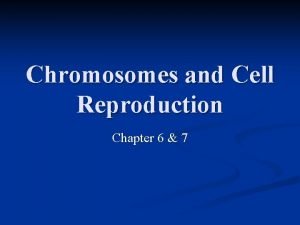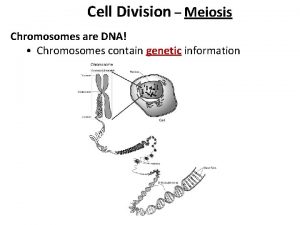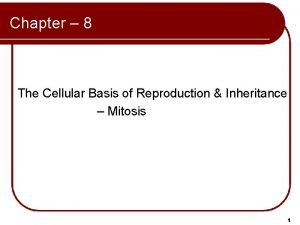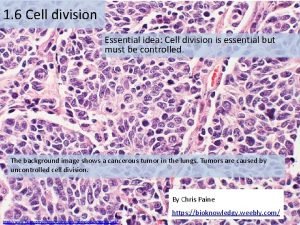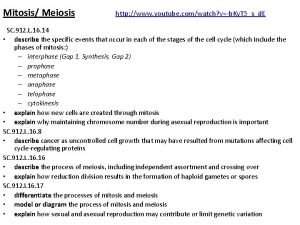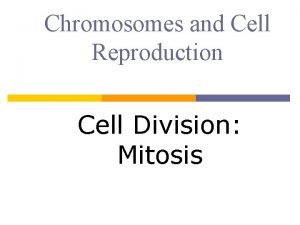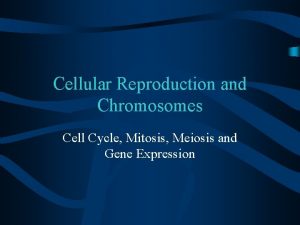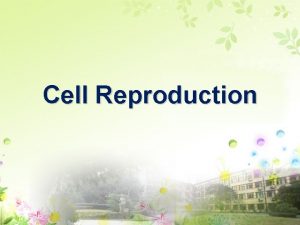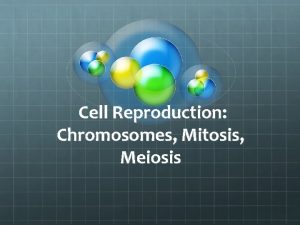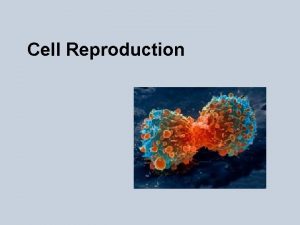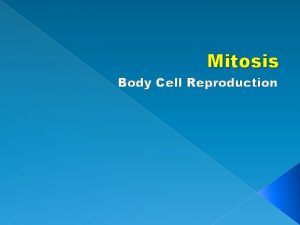Cellular Reproduction and Chromosomes Cell Cycle Mitosis Cell








- Slides: 8

Cellular Reproduction and Chromosomes Cell Cycle, Mitosis

Cell Cycle • Cells reproduce through a continuous sequence of growth and division known as the cell cycle • Interphase – cells are making new molecules and DNA is copied in a process called DNA replication. – Interphase broken into 3 steps: • • G 1 – Gap 1 involves metabolic activities S – Synthesis involves DNA replication G 2 – Gap 2 is preparation for cell division M – Mitosis and Cell Division

Cell Cycle • Timing of each phase can vary among different types of cells. – • • Organ cell vs. skin cell Parent cell divides to create two new daughter cells (somatic cells have 46 chromosomes) Purpose of Mitosis 1. 2. 3. Growth Regeneration of Damaged Tissue Maintenance of the Body

Phases of Mitosis • • • Several events must happen to ensure that as a cell divides, the genetic material inside is properly shared between each new daughter cell. Root tip cells are often looked at as they undergo mitosis frequently Phase order: PMAT 1. 2. 3. 4. Prophase Metaphase Anaphase Telophase & Cytokinesis

Prestep!!! • INTERPHASE! • During this phase the cell grows, heals, and creates proteins in order to start the division process! • The cell duplicates it’s genetic material (called chromatin) and creates two identical sister chromatids, joined by an object known as a centromere.

Mitosis • Prophase • chromatin, which is DNA and proteins, condenses and becomes visible • Nuclear membrane and nucleolus disappear • Centrioles made up of microtubules migrate to opposite poles of the cell • Spindle fibres start to form between the two centrioles

Mitosis • Metaphase • Spindle fibres attach to centromere • Chromosomes line up on the cell’s equator (equatorial plate) • Anaphase • Centromere splits and chromatids are pulled to opposite poles of the cell

Mitosis • Telophase • Chromatids reach the two opposite poles • At this time each chromatid is considered a single non-replicated chromosome • Chromosomes unwind and become less visible • Cytokinesis • Actual cell division • Spindle fibres disappear, nucleolus reappears, nuclear membrane and in plant cells a new cell wall is formed
